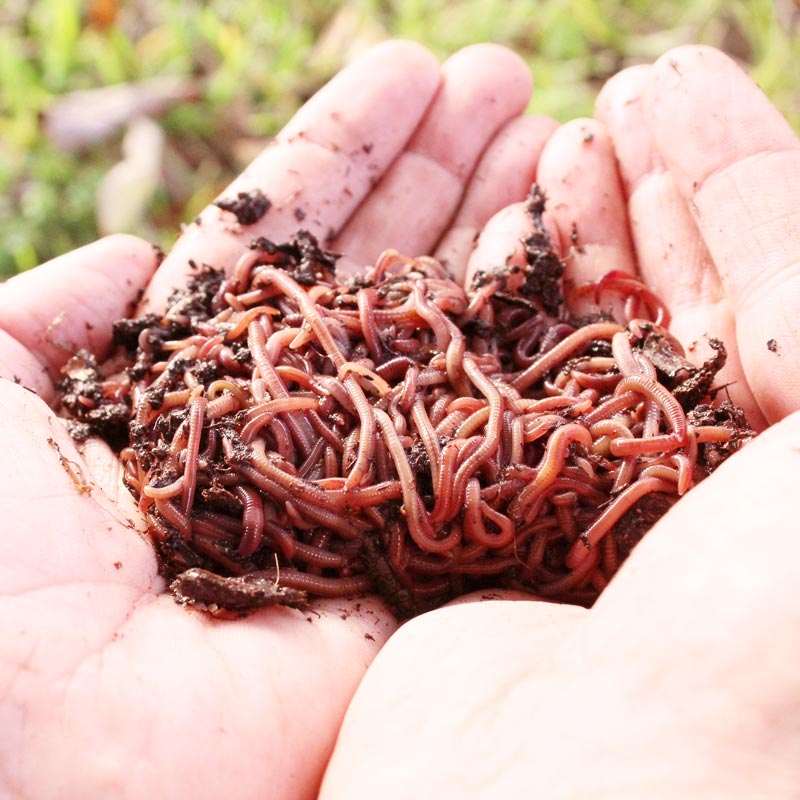Red Wiggler Worms - Improve Your Soil Health Normally
Red Wiggler Worms - Improve Your Soil Health Normally
Blog Article
Red Wiggler Worms Demystified: Opening the Keys of Vermiculture for Greener Living and Nutrient-Rich Soil
In the world of lasting practices for enriching soil quality and promoting eco-conscious living, red wiggler worms play an essential yet frequently ignored role. These simple creatures have the impressive capacity to change natural waste into nutrient-rich spreadings that offer as a potent natural plant food. By delving right into the globe of vermiculture, one can discover a plethora of benefits that prolong far beyond typical composting techniques. Comprehending the details of caring for these worms, enhancing their atmosphere, and using their castings can lead to a greener way of life and much healthier soil for plants to thrive.
The Duty of Red Wiggler Worms
Red Wiggler worms play a crucial duty in composting systems by efficiently damaging down organic matter right into nutrient-rich spreadings. These ravenous eaters eat a variety of natural products, such as cooking area scraps, yard waste, and paper products. As they feed, the worms' digestive system procedures damage down the raw material into a penalty, dark, and nutrient-dense material known as worm spreadings or vermicompost.
The spreadings generated by Red Wiggler worms are highly beneficial for soil health and plant development. They are rich in necessary nutrients like nitrogen, phosphorus, and potassium, which are important for supporting healthy and balanced plant growth. In addition, worm spreadings have beneficial germs and enzymes that help enhance soil structure, rise water retention, and boost nutrient uptake by plants.
Advantages of Vermicomposting

It enhances soil framework, improves dirt oygenation, and raises soil wetness retention. Vermicompost also enhances the dirt with important nutrients like phosphorus, potassium, and nitrogen, promoting plant development and general soil fertility.
Furthermore, vermicomposting supports lasting gardening methods by supplying a natural and chemical-free alternative to synthetic plant foods. Red Wiggler Worms. This environmentally friendly strategy not only enhances the dirt but also assists reduce dependence on harmful chemicals, advertising a greener and more sustainable means of horticulture
Setting Up a Worm Bin
When establishing a worm container for vermicomposting, proper configuration is vital to make sure the success of the composting process. The initial action in setting up a worm bin is choosing an appropriate container.
After including the bedding, introduce the red wiggler worms to the bin. It is advised to begin with a tiny number of worms and progressively enhance as they multiply. The worms ought to after find this that be given with food scraps such as vegetables and fruit peels, coffee grounds, and eggshells. It is necessary to prevent adding meat, dairy, oily, or salted foods to stop drawing in insects and developing undesirable odors.
Frequently keep an eye on the wetness levels and temperature level in the worm container to make sure ideal conditions for the worms. With correct setup and upkeep, the worm bin will effectively convert natural waste into nutrient-rich compost for your plants and garden.
Harvesting Worm Spreadings
To effectively collect nutrient-rich worm castings from your vermicomposting system, an organized harvesting technique is necessary. When it comes blog here time to collect the worm castings, there are a few vital steps to comply with to make certain a successful procedure.

Troubleshooting Common Issues
Determining and dealing with usual obstacles that might develop during the vermicomposting process is critical for keeping a effective and healthy worm container. One typical concern that vermicomposters experience is overfeeding. Adding excess food scraps can result in a build-up of wetness and acidity in the worm container, potentially hurting the worms. To stop this, feed the worms in small amounts, making certain that the food scraps are effectively broken down before adding a lot more. An additional issue is undesirable smells rising from the worm bin. Foul smells indicate anaerobic conditions, normally triggered by overwatering or inadequate air flow. To fix this, readjust the moisture levels by including dry bedding materials like shredded paper or cardboard and increase aeration by transforming the bed linens on a regular basis.
Additionally, if the worm population read this post here is decreasing or the worms appear unhealthy, it might be because of ecological stressors such as extreme temperature levels or pH levels. Checking these factors and making required adjustments is essential for the health of the worms. By repairing these usual concerns promptly, vermicomposters can guarantee a smooth and effective vermicomposting process while preserving a growing worm populace.

Conclusion
In conclusion, red wiggler worms play a crucial function in vermiculture by damaging down natural matter right into nutrient-rich dirt. Setting up a worm container is crucial for successful vermiculture, and harvesting worm castings provides important compost for gardening.
As they feed, the worms' digestive procedures damage down the natural matter into a fine, dark, and nutrient-dense material known as worm spreadings or vermicompost.
The spreadings created by Red Wiggler worms are highly advantageous for dirt health and wellness and plant development. Adding excess food scraps can lead to a buildup of wetness and level of acidity in the worm bin, potentially damaging the worms.In addition, if the worm population is declining or the worms appear unhealthy, it might be due to ecological stress factors such as extreme temperature levels or pH levels. Setting up a worm bin is essential for successful vermiculture, and harvesting worm castings supplies important garden compost for horticulture.
Report this page